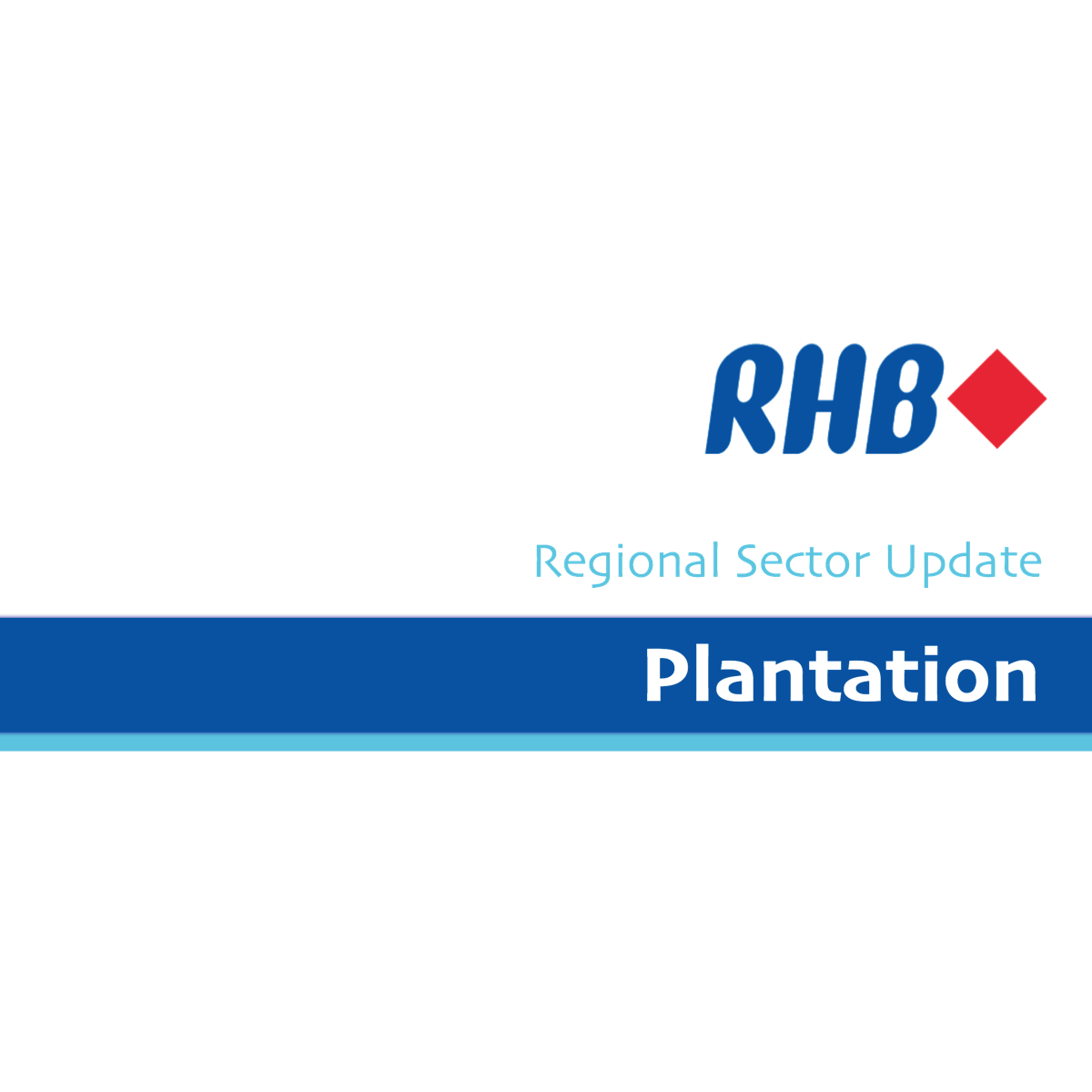 FIRST RESOURCES LIMITED (SGX:EB5)
FIRST RESOURCES LIMITED (SGX:EB5)
Plantation - Covid-19 + Crude Oil = Correction
- We are putting our OVERWEIGHT call under review for now. While we While we believe fundamentals are still relatively intact, in view of the still-tight supply and demand scenario, we do not rule out the possibility of CPO prices remaining low or falling further, due to the negative sentiment surrounding commodities and the general economic environment currently.
Inventory dropped 4.2% m-o-m to 1.68m tonnes in February
- Inventory dropped 4.2% m-o-m to 1.68m tonnes in February, in line with expectations. With this, the annualised stock/usage ratio has fallen further to 7.9% (from 8.2% in Jan 2020), well below the 15-year historical mean of 9.6%. Ending stock levels are 45% lower y-o-y.
- We expect production to start improving from March, as the dry weather impact from 1Q19 should reduce over time. Demand from China should also start improving, post-logistics disruption, implying that stock levels could continue declining.
Sensitivity analysis for CPO
- We have done a sensitivity analysis for CPO, based on different demand scenarios. Here, we make some assumptions on demand from major importers like China, the US and Europe. Our scenario analysis is aimed at deciphering if stock levels will rise to untenable levels, should demand drop as a result of the COVID-19 outbreak and reduced biodiesel demand.
- Our base case is based on Oil World’s latest forecasts, which assumes a slight (0.4%) decline in consumption due to the outbreak. Stock-usage ratios are still expected to decline for palm oil and for the 8-vegetable oil complex.
We have examined three scenarios
- Scenario 1 is the possibility of a 10% decline in demand from the EU, China and the US. Scenario 2 is the possibility of a 10% drop in demand from these countries, and a 1.4m-tonne shortfall in biodiesel demand production in Indonesia. Scenario 3 (worst case) is the possibility of a 5-10% drop in demand from all consumers.
- Based on our analysis, we believe Scenario 1 is the most likely, while Scenario 2 may be plausible and Scenario 3 unlikely. Assuming Scenario 2 occurs, this could indicate a slight increase to stock/usage ratios, albeit to a relatively reasonable level. This indicates that CPO could range MYR2,400.00-MYR2,600.00/tonne, if history is anything to go by.
- See attached PDF report for more details on the sensitivity and scenarios analysis.
We are reviewing our CPO price assumptions
- We are reviewing our CPO price assumptions currently, but prefer to wait until the dust is settled before making changes to our forecasts. Nevertheless, we have done a sensitivity analysis on the earnings and TPs of the stocks under our coverage, based on CPO prices averaging MYR2,000.00-MYR2,500.00/tonne. With this, and assuming lower target P/Es are applied, we can see that most share prices have already retreated and are reflecting the current lower CPO prices of MYR2,200.00- MYR2,400.00/tonne. As such, we believe there are pockets of opportunities for investors to cherry-pick some quality planters at inexpensive valuations.
Black swan impact
CPO sell-down justified?
- In this report, we try to make sense of the recent sell-down in CPO stocks, and draw a conclusion about where the CPO price should be headed in the medium term. CPO prices have fallen from a high of MYR3,114.00/tonne in early January to touch a low of MYR2,250.00/tonne two days ago.
- We believe the recent decline in CPO prices was very much sentiment-driven and not fundamentals-driven. In previous reports, we did not expect to see a significant decline in demand stemming from the COVID-19 outbreak, as palm oil is a staple food product. However, with the recent change in crude oil price fundamentals, the risk of an extended commodity sell-down cannot be ignored.
SARS tells us demand for CPO should not be affected in the medium term.
- Based on our analysis of Malaysia’s CPO exports to China during the severe acute respiratory syndrome (SARS) outbreak, we note that demand actually rose by 38% y-o-y in 2003 and by a further 11% y-o-y in 2004. China’s total palm oil consumption during that period also grew by 10.6% y-o-y in 2003 and a by further 5% y-o-y in 2004.
- Based on our analysis of other countries affected by SARS during that period, which includes China, Malaysia and Indonesia, we note that palm oil consumption during that period in those countries also continued to rise.
… although short-term demand is affected by logistics disruptions.
- Moving into 2020, while we have seen a marked decline in Malaysian exports to China in YTD-February (-17% y-o-y), we highlight that this was due to the Lunar New Year holiday, which started in mid-January. We expect demand from China to start normalising from March onwards.
Management of plantation companies cite no significant fall in demand.
- Based on our conversations with management teams of the companies we cover (those with downstream operations), they have not seen a significant decline in demand from China or elsewhere in the last two months. This is particularly given the current low production period, where the supply of palm oil remains at very tight levels. While there were some logistics disruptions due to the delay of workers coming back post festive season, this issue should be resolved soon.
- We note that palm oil stock levels in China are at extremely low levels currently, and restocking activities will therefore need to happen sooner, rather than later.
See attached 15-page PDF report for more details.
Hoe Lee Leng
RHB Securities Research
|
Christopher Andre Benas
RHB Invest
|
Singapore Research Team
RHB Invest
|
https://www.rhbinvest.com.sg/
2020-03-11
SGX Stock
Analyst Report
2.300
SAME
2.300

